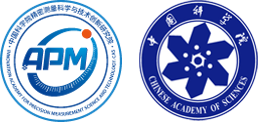

Science and Technology Daily: Wuhan Institute of Physics and Mathematics successfully developed the first near room temperature ultra-low-field NMR spectrometer
Science and Technology Daily News (reporter Wu Jiashen): Recently, the reporter learned from the Chinese Academy of Sciences that the ultra-sensitive magnetic resonance study group leaded by professor Xin Zhou from Wuhan Institute of Physics and Mathematics, Chinese Academy of Sciences successfully developed China's first near-room temperature (40 degrees C) ultra-low-field NMR resonance spectrometer. The device not only can be used to study the molecular structure of the material information and dynamics in the earth's magnetic field and other natural conditions, but also to directly detect the ferromagnetic materials such as iron oxide magnetic nanoparticles samples which high-field NMR spectrometer can't. It is expected to play an important role in the fields of biology, medicine, etc.
Traditional NMR technology uses radio frequency induction coil to detect the magnetic resonance signal. In order to get higher signal sensitivity, almost commercial superconducting NMR spectrometer focuses on high magnetic field. However, the high magnetic field can't be used for the people with in vivo devices, such as pacemakers. Usually, the real environment of chemical sample and biological tissue is the magnetic field or less. The traditional NMR technology is difficult to obtain a usable magnetic resonance signal in this environment.
Dr. Guobin Liu of the group used high sensitive atomic magnetometer, which can use optical technology to detect NMR signal under very weak magnetic field, instead of traditional RF coil. Atomic magnetometers can work at the magnetic field without sacrificing sensitivity, and does not require cryogenic technology and high cost for running a superconducting high magnetic field. With this ultra-low-field nuclear magnetic resonance spectroscopy based on the atomic magnetometers, the researchers detected the NMR signal (2Hz) of water at the magnetic field (47nT) which is 1,000 times weaker than the earth magnetic field. The field and resonance frequency lower 250 million times than the current mainstream commercial magnetic resonance spectroscopy instrument (such as a 500M Hz, 11.7T). In addition, the ultra-low-field NMR spectrometer can detect the relaxation rate of the contrast agent to enhance the water quality of the child, and achieve high accuracy.
Wuhan Institute of Physics and Mathematics, Chinese Academy of Sciences has long-term research experience of developing magnetic resonance instrument technology. It has successfully developed with 300-500MHz high magnetic field NMR spectrometer independent intellectual property rights, ant it is ongoing industrialization. The success of ultra-low field NMR spectrometer fills the blank of our own research and development in ultra-low-field spectrometer. Relevant results of instrument development published in the recent issue of "Journal of Magnetic Resonance." The study was supported by the National Natural Science Foundation and the 100-Talent program of Chinese Academy of Sciences.
Link:
http://digitalpaper.stdaily.com/http_www.kjrb.com/kjrb/html/201311/24/content_234985.htm?div=-1

Innovation Academy for Precision Measurement Science and Technology, CAS.
West No.30 Xiao Hong Shan, Wuhan 430071 China
Tel:+86-27-8719-8631 Fax:+86-27-8719-9291
Email:hanyeqing@wipm.ac.cn
鄂ICP备15017570号-1